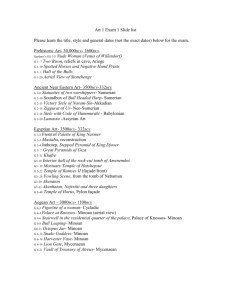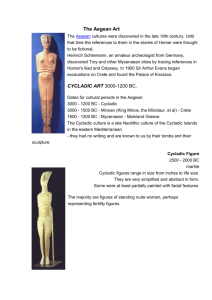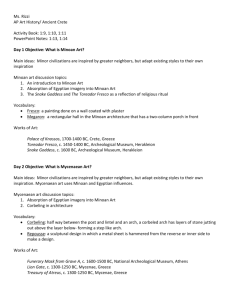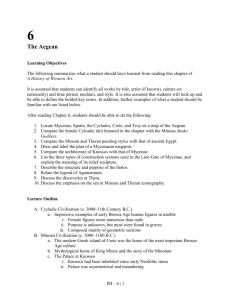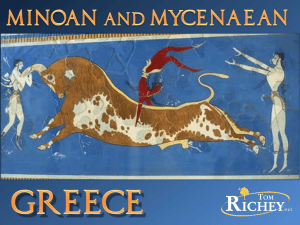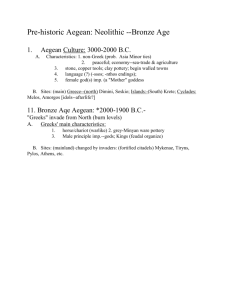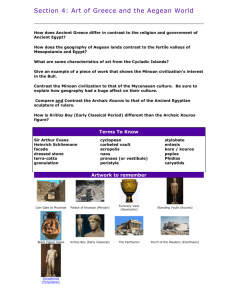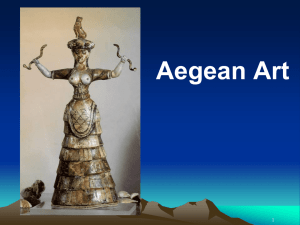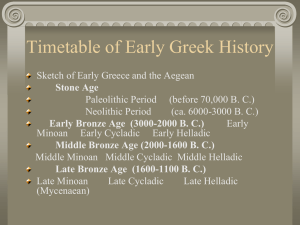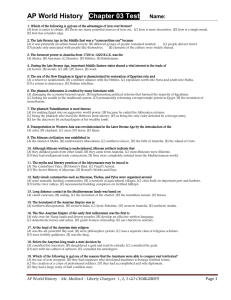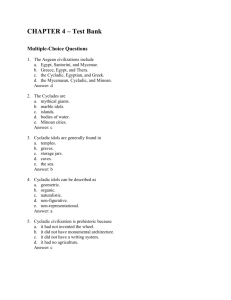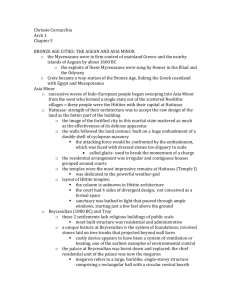Aegean - Orem High School
advertisement
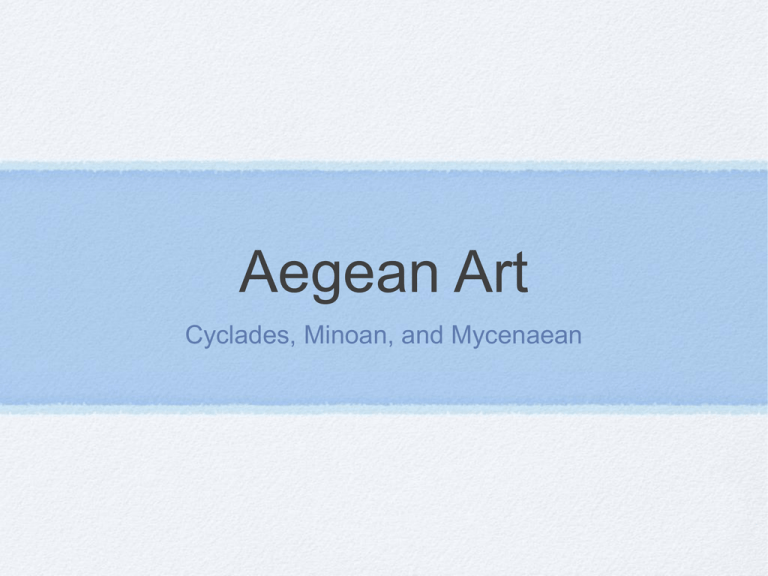
Aegean Art Cyclades, Minoan, and Mycenaean Unit Concepts 1. Aegean civilization was roughly contemporary with Mesopotamian and Egyptian civilizations. It was thought to be mythological until 1870. It was a forerunner to the Greeks. It was composed of the Cycladic, Minoan, and Mycenaean styles. Aegean Map Homer’s Myths Homer wrote of mythical ancient Greeks who were heroes. He wrote the Iliad about Agamemnon, Achilles, Helen, and Paris. He also wrote The Odyssey about Odysseus’s journey home. It was all thought to be mythological until archaeologists found the ruins for Ancient Troy. Famous Archaeologists Heinrich Schliemann Sir Arthur Evans He was a businessman until the age of 36, when he decided to become an archaeologist. Became interested in Med. seals while at Oxford and went to Crete to learn more. He discovered the ruins of Troy and helped uncover ruins in ancient Mycenae, perhaps the city of Agmemnon. Bought the property and uncovered the ruins of ancient Knossos. Named it the Minoan culture after King Minos. Cyclades Cyclades refers to a group of islands just to the east of Crete. They look like they’re in a circle, thus the Cyclades. Inhabitants were sailors, fishermen, and traders. No evidence of writing, but we have pottery, metalwork, and sculptures. Most famous artwork are the marble idol sculptures. Very simplified, geometric shapes. Assumed that they are objects of worship. Minoan vs. Mycenaean Minoan Culture Myceanaean Culture Open culture. Traders and fishermen. Colorful, happy, lively works of art. Very military and warlike. Myths are about war: the Iliad. Beautiful palace, but built for beauty and freshness, not for protection. Built citadels and tombs. Architecture was built to protect from invasion, not for beauty. Conquered by Mycenaeans Forerunners to the ancient Greeks. Thera/Santorini Volcanic island that erupted around 1500 B.C. In the ashes, a flourishing culture was exposed. They had winding streets and nice houses, even indoor plumbing. Most comfortable living conditions. No bodies. Must have evacuate Boxing children Have similar look to Minoan frescoes. Very lively and active figures. darker skin for the males. Curvilinear and dynamic. But without the wasp waists of Crete. Ship fresco Mycenaean Architecture Mycenaeans were fighters. So much of their architecture were citadels. They would choose a high, rocky hill, and built a fortress on top. There would be living quarters, etc. The focus of the citadel was the megaron, Greek for large room. Most of the citizens would live in small mud brick houses. Then, when under attack, they would retreat to the citadel. Megaron The megaron was the throne room. The basic plan for a megaron was pretty simple. A large open room with four columns in the center with a circular hearth. Lion Gate The citadels were cut out of massive, irregular blocks of hewn stone. The Greeks called the walls Cyclopeans, because it seemed that it had been placed there by giants. They would use post and lintel construction for doorways, usually with a triangular space on top. This one has two lions protecting the entrance. Tholos A tholos was a beehive tomb. It’s made by corbeling stones on top of each other, with each one slightly on top, overlapping the one below it. A dromos is the long walkway leading to the tomb. tomb of clytemnestra Clytemnestra was the wife of Agamemnon, who murdered him when he returned from Troy. Once body was inside the tholos, the triangle and door were blocked in with bricks. funeral Mask In many of the tholos uncovered, wonderful objects were uncovered such as this funeral mask. It is thought that these masks would secure a person’s identity in the afterlife. Although stylized, this definitely was modeled after a specific person. This particular mask has been mistakenly called the Mask of Agamemnon.
